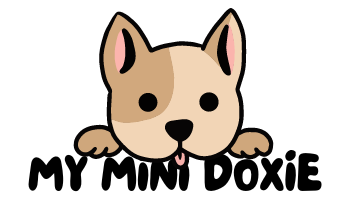The Dachshund, affectionately known as the sausage dog, is one of the most distinctive and beloved breeds in the canine world.
Recognizable by its long body and short legs, this small hound has captured the hearts of dog lovers worldwide with its charming appearance and spirited personality.
This article delves into the Dachshund’s history, characteristics, care, and unique qualities, providing a comprehensive guide for potential owners and enthusiasts alike.
A Brief History of the Dachshund
Origins in Germany
The Dachshund’s origins trace back to 15th century Germany, where they were bred for hunting purposes.
Their name, derived from the German words “dachs” (badger) and “hund” (dog), highlights their primary role in hunting badgers.
These dogs were valued for their tenacity, courage, and ability to dig into burrows to flush out the game.
Evolution and Recognition
Over the centuries, the breed evolved, and different varieties emerged. By the 19th century, Dachshunds had gained popularity as hunting dogs and as loyal companions.
The breed was officially recognized by kennel clubs in the late 19th and early 20th centuries, further solidifying their status as a favourite among dog enthusiasts.
Physical Characteristics
Size and Build
Dachshunds are small but sturdy dogs. They typically weigh between 16 to 32 pounds, with miniature versions weighing less than 11 pounds.
Despite their short stature, their long bodies give them an endearing and functional appearance for their original purpose of hunting in tight spaces.
Coat Types and Colours
There are three coat types in Dachshunds: smooth, long-haired, and wire-haired. Each coat type has its grooming requirements and contributes to the breed’s versatility in appearance. Dachshunds come in a variety of colours, including red, black and tan, chocolate, and dapple patterns.
Unique Features
The Dachshund’s long body and short legs are its most distinctive features.
This body structure, combined with a strong, muscular build, enables them to dig and burrow effectively.
Their expressive eyes and alert ears add to their charming and intelligent demeanour.
Temperament and Personality
Bold and Brave
Despite their small size, Dachshunds possess a bold and courageous personality.
They are known for their fearless nature, a trait that served them well in their original role as hunting dogs.
This bravery often translates into a strong-willed and independent character.
Loyal Companions
Dachshunds are incredibly loyal and form strong bonds with their owners. They thrive on companionship and can be very affectionate.
However, their loyalty also means they can be protective and sometimes wary of strangers, making early socialisation important.
Playful and Energetic
These dogs are playful and energetic, requiring regular exercise to keep them healthy and happy.
Their playful nature makes them great companions for families, though their independent streak may sometimes lead to stubborn behaviour.
Caring for a Dachshund
Diet and Nutrition
A balanced diet is essential for maintaining a Dachshund’s health. Owners should provide high-quality dog food that meets their pet’s nutritional needs.
Portion control is crucial, as Dachshunds are prone to obesity due to their short legs and long bodies.
Exercise Needs
Regular exercise is vital for Dachshunds to prevent obesity and keep them mentally stimulated.
Daily walks, playtime, and opportunities to explore and dig can help satisfy their need for activity. However, care should be taken to avoid activities that could strain their backs.
Grooming Requirements
Grooming needs vary depending on the coat type. Smooth-coated Dachshunds require minimal grooming, while long-haired and wire-haired varieties need regular brushing to prevent mats and tangles.
Regular nail trimming, ear cleaning, and dental care are also important for overall health.
Health Considerations
Dachshunds are prone to certain health issues, particularly intervertebral disc disease (IVDD) due to their long backs.
Preventative measures, such as maintaining a healthy weight and avoiding excessive jumping, can help reduce the risk.
Regular veterinary check-ups are essential to monitor and manage potential health problems.
Conclusion
The Dachshund is a breed that combines unique physical characteristics with a spirited and loving personality.
Their history as determined hunters adds depth to their character, making them fascinating companions. With proper care, attention, and love, Dachshunds can thrive as loyal and playful members of any family.
Whether you are considering adopting a Dachshund or are simply an admirer of this charming breed, understanding their needs and traits will ensure a happy and fulfilling relationship with these delightful dogs.

